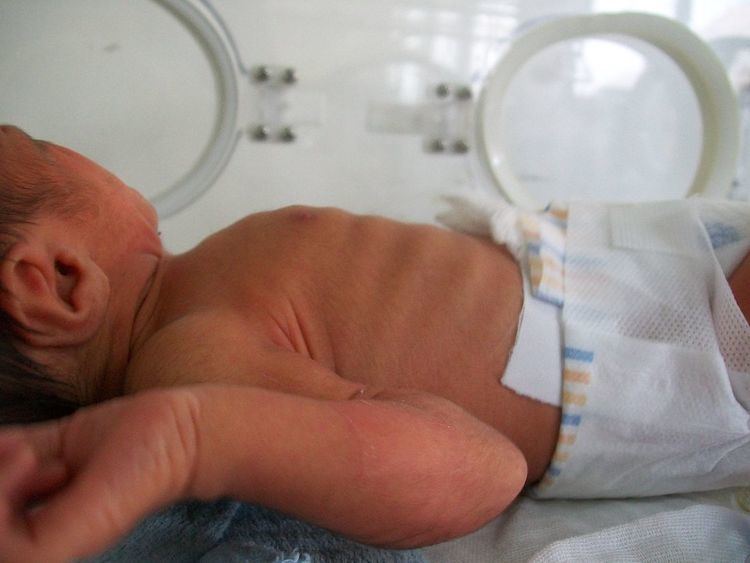 | ||
Labored respiration or labored breathing is an abnormal respiration characterized by evidence of increased effort to breathe, including the use of accessory muscles of respiration, stridor, grunting, or nasal flaring.
Contents
Classification
Labored breathing is distinguished from shortness of breath or dyspnea, which is the sensation of respiratory distress rather than a physical presentation.
Still, many simply define dyspnea as difficulty in breathing without further specification, which may confuse it with e.g. labored breathing or tachypnea (rapid breathing). Labored breathing has occasionally been included in the definition of dyspnea as well. However, in the standard definition, these related signs may be present at the same time, but don't necessarily have to be. For instance, in respiratory arrest by a primary failure in respiratory muscles the patient, if conscious, may experience dyspnea, yet without having any labored breathing or tachypnea. The other way around, labored breathing or tachypnea can voluntarily be performed even when there is no dyspnea.
Presentations of labored respiration include:
Causes
Causes of labored breathing include:
